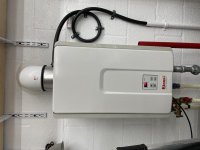BC38's comments are spot on and should be taught in school and adhered to like glue. I preach the same philosophy about our transportation. It always baffles me when someone bemoans the fact that their car needs some "unexpected" repair. When asked, I advise new automobile owners to set aside $50 per month for "unexpecteds"
For the most part I agree. Our house was built in 2015 for $275K and has now increased in value due to increased housing demand almost 200%. I believe the original house cost to base your expectant repair cost to be true and that you should count as that cost the landscaping, and other additions you do the first five years.


